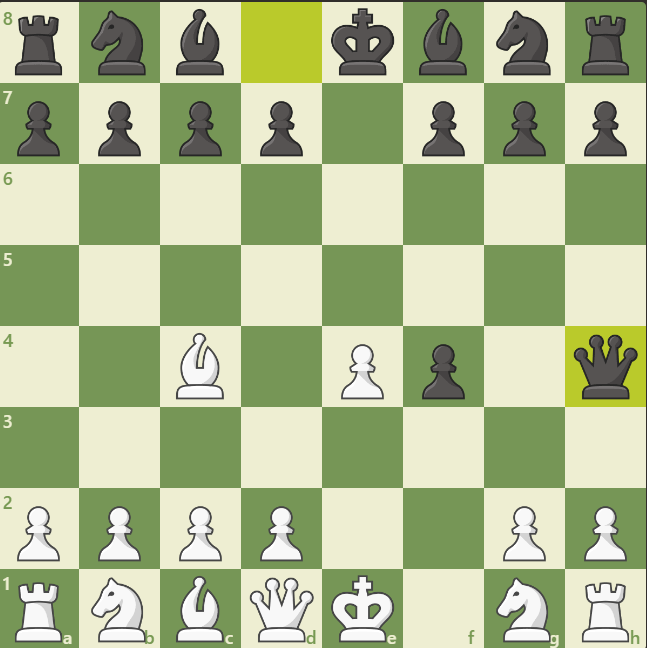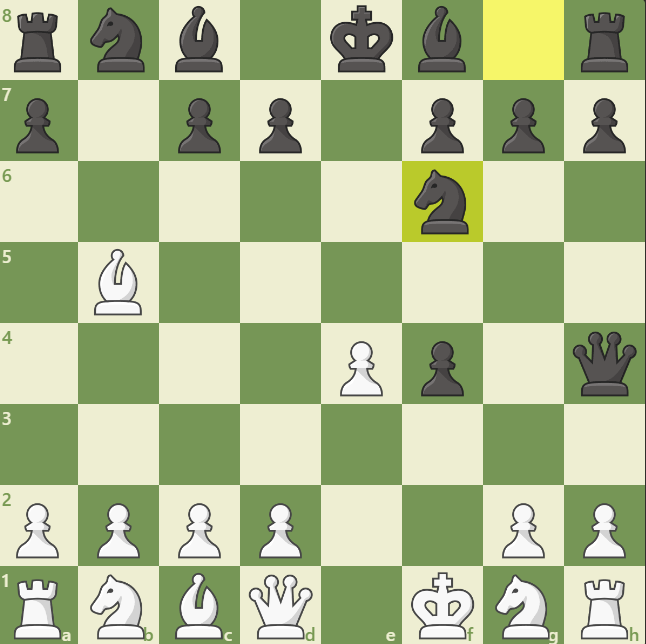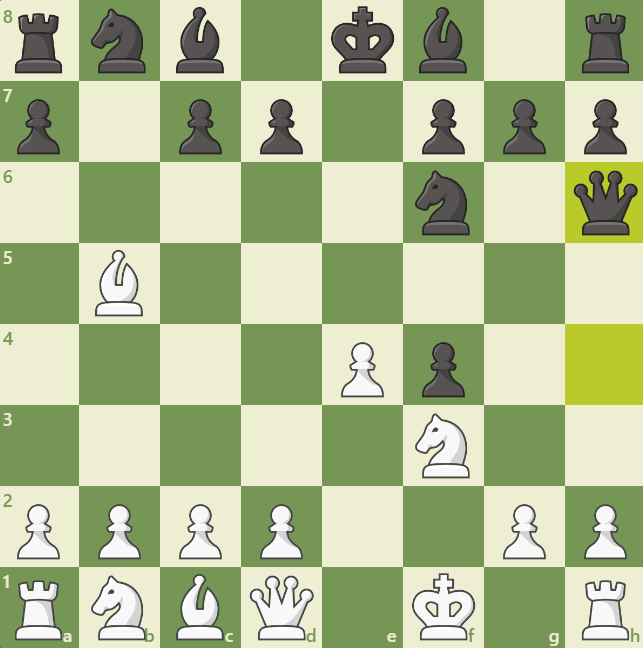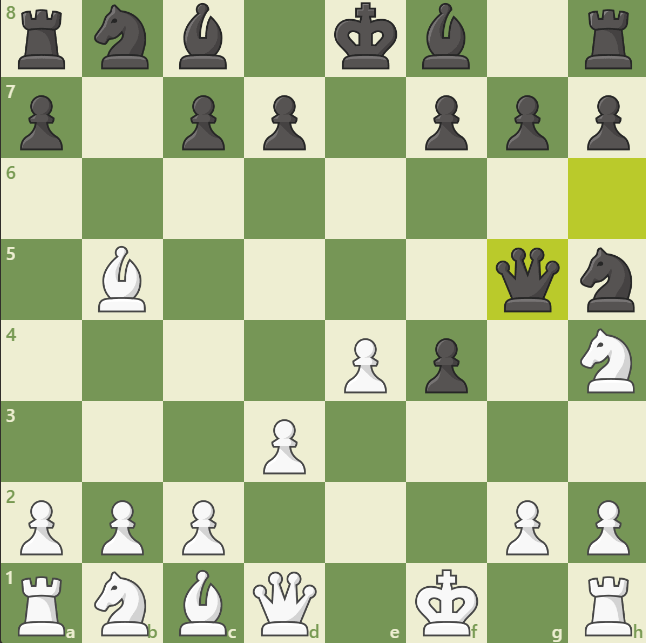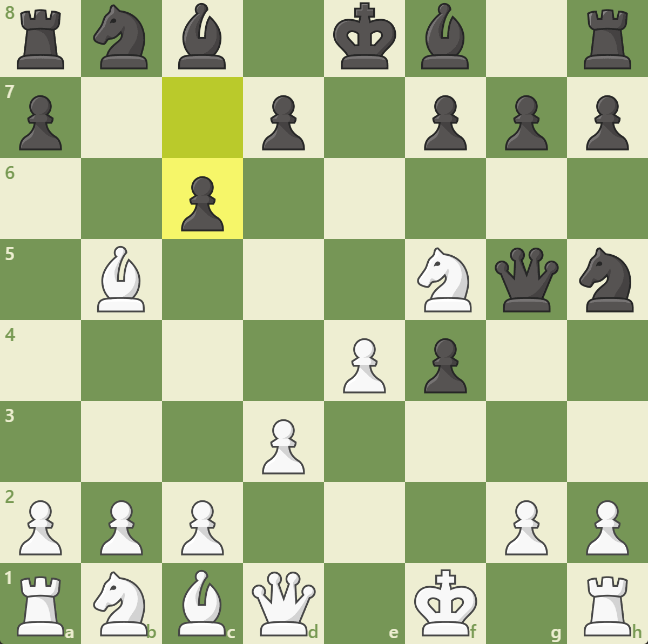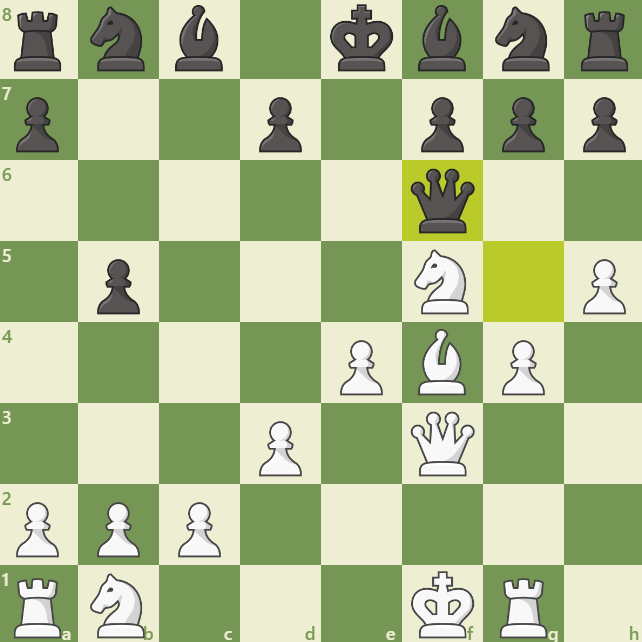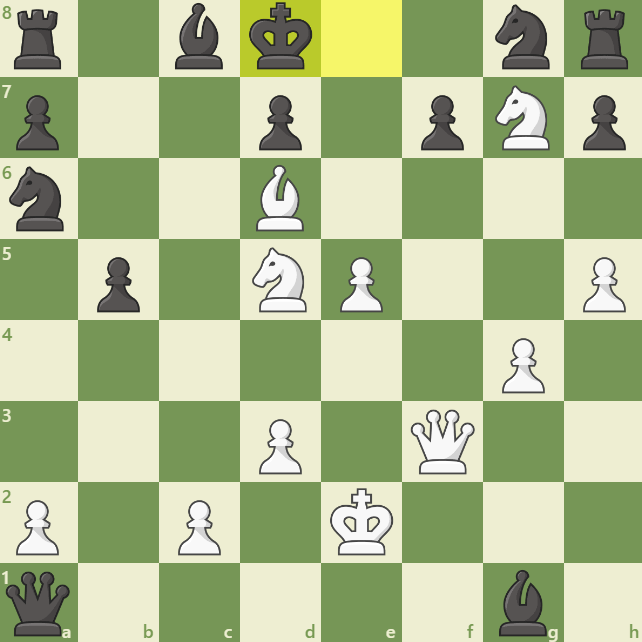"Chess is arguably the most complex and skillful game ever to be played. It’s been around for a millennium, played by people all over the world of all backgrounds. It’s been played by rulers, by kings and queens, by multitudes of famous people from all over the world of all time periods (such as Napoleon, Albert Einstein, and Benjamin Franklin, among others), and finally, the average person. It’s currently as popular as ever, with chess professionals playing in tournaments with large prize funds organized by organizations dedicated solely to doing just this, not to mention a more recent controversy between Hans Niemen and Magnus Carlsen making headlines. This article goes through all the moves of possibly the most famous chess game of all time, the Immortal Game, and explains them in a way that is hopefully understandable even to someone who doesn’t play chess." -- Isaiah Kahn, 7th grade
The Immortal Game (Adolf Anderssen-Lionel Kioseritzky)
This game was a casual game played between the German chess master Adolf Anderssen and a French master named Lionel Kioseritzky during an off-day of the first ever international chess tournament. Adolf Anderssen was arguably the best player ever before Paul Morphy, who Anderssen was beaten by frequently when they played. This particular game versus Lionel Kioseritzky was played in London during the year 1851.
1. e4 e5
This is the King’s Pawn Opening. The King’s Pawn Opening isn’t exactly an opening on its own, but a lead-in to many other openings such as the Italian Game, the Ruy Lopez (AKA the Spanish Game), the Vienna game, the Scotch game, and the Four Knights Game, among others. There are also different lines within those like the Morphy Defense (which is the current main line of the Ruy Lopez in which you force the player with the White pieces to decide whether to trade pieces or have his Bishop leave your territory), the Fried Liver Attack (which is an aggressive line in the Italian game in which you sacrifice a piece to lure Black’s king into a vulnerable position), the Halloween Gambit (which is a slightly dubious line in the Four Knights Game in which you sacrifice a piece for dominant center control), and the Vienna Gambit (which is a line in the Vienna game where you sacrifice a pawn and weaken your king for center control and for the opportunity to kick black’s pieces around). This isn’t the only opening, though. Black can decide not to meet White’s pawn in the center and play the French Defense (1… e6), where Black spends their first move setting up to put a pawn in the center, or Black can play the Scandinavian Defense (1…d5) which is a confrontational opening where Black trades center pawns with White and forces an open game (an open game is a game where the pawn structure isn't locked and pieces for both sides have better mobility). Black can also play the Sicilian Defense (1… c5), where Black sends a flank pawn into battle to stop White from taking the full center while also not committing any of their center pawns. White doesn’t have to begin with the King’s pawn, either. White can open with the Queen’s pawn (1. d4 - the Queen's Pawn Opening and a lead-in for openings like the Queen’s Gambit and the London System) or a flank pawn (1. c4 - the English opening - or 1. f4 - the Bird opening), to which Black has many replies to also. And all of that isn’t even mentioning the Indian attacks and defenses, where you position your pieces to strike in the center.
2. f4 exf4
2. f4 exf4
This is the King’s Gambit Accepted. The goal of this gambit is to win control of the full center by diverting Black’s center pawn, but it is considered slightly dubious for White because it makes White’s king significantly more vulnerable and it gives up a pawn. Few modern players play it.
3. Bc4 Qh4+
3. Bc4 Qh4+
This is an aggressive sideline of the King’s Gambit where White allows the Black queen into his territory and purposefully loses the right to castle (castling is when you move your king over two squares and the rook on the side that you are castling goes to the center. The reason for this is to get your king out of the center and to let your rooks become more active. You can’t castle if the king has moved or the rook on the side that you want to castle has moved) in exchange for the ability to activate his pieces while attacking the queen, which means that his pieces will get out quicker than Black’s since Black will have to move their queen instead of activating their own pieces (in chess terms you would call it “developing with tempo” or “developing with a tempo on the queen”).
4. Kf1 b5
4. Kf1 b5
White moves out of the check from the Black queen and Black plays the Brian gambit, which is a dubious gambit where you sacrifice a pawn to remove pressure from the weak f7 square, but it mostly just loses a pawn for no reason. Very few current players play it.
5. Bxb5 Nf6
5. Bxb5 Nf6
White accepts the gambit and Black activates a piece. This seems like a questionable move compared to something like Nc6 or Bb2 because this removes the f6, e7, and d8 squares for Black’s queen, but it’s the top move of the computer (chess computers such as Stockfish and AlphaZero are far better than all humans).
6. Nf3 Qh6
6. Nf3 Qh6
White attacks the queen and the queen retreats.
7. d3 Nh5
7. d3 Nh5
White lets his dark-squared bishop out and Black threatens to win an Exchange (a minor piece - knight or bishop - for a rook) with Ng3+, forking the king and the rook. You would think you could simply take the knight with the pawn (hxg3) but then the queen takes your rook instead of the knight because the queen was pinning that pawn to the rook (a pin is when a piece can’t - or shouldn’t - move because then the piece behind it would be lost). This move (Nh5) is an inaccuracy because Black should be developing his pieces instead of making fairly easily stopped threats. Also, moving a knight to the edge of the board is generally not ideal because the knight is much easier to get trapped there and also controls less squares since the edge cuts it off.
8. Nh4 Qg5
8. Nh4 Qg5
White blocks the pin and angles to get the f5 square for his knight. Black then attacks the newly moved knight along with the bishop on the other side of the board.
9. Nf5 c6
9. Nf5 c6
The knight moves out of danger to f5, blocking the queen from seeing the bishop. Since the queen has moved from the h-file and is no longer pinning the h-pawn, Ng3+ is no longer a threat. Black plays c6 to attack the bishop.
10. g4 Nf6
10. g4 Nf6
Black counter attacks the knight, and the knight moves. You cannot take the pawn en passant (a pawn captures a pawn that moved two squares as if it moved one square) because you would lose your queen since the pawn is pinned.
11. Rg1 cxb5
11. Rg1 cxb5
White sacrifices his bishop! The point is to protect the g4 pawn, which White does not want to lose because it will greatly diminish his constant threat of trapping the queen. Black takes the bishop.
12. h4 Qg6
12. h4 Qg6
White attacks the queen and the queen moves.
13. h5 Qg5
13. h5 Qg5
White attacks the queen again and the queen goes back to where it was. You’ll notice that the queen now has zero safe squares.
14. Qf3 Ng8
14. Qf3 Ng8
White threatens to trap the queen with Bxf4 (the bishop on c1 takes the pawn on f4 and the queen would be trapped and taken on the next move since it cannot go anywhere). Black stops that by deactivating (or undeveloping in chess speak) his knight and making 3 safe squares for his queen (f6, e7, d8). The extra piece for Black isn’t being particularly felt due to the fact that none of Black’s pieces aside from his queen are doing anything, and all the queen is doing is being chased around.
15. Bxf4 Qf6
15. Bxf4 Qf6
White takes the pawn attacking the queen and the queen retreats to f3, threatening to take the b2 pawn and trap the rook in the corner.
16. Nc3 Bc5
16. Nc3 Bc5
White blocks the attack on the b2 pawn with his knight and Black attacks the rook on g1 with his bishop.
17. Nd5 Qxb2
17. Nd5 Qxb2
White attacks the queen and seemingly blunders his b2 pawn and an Exchange (two rooks are attacked and one of them will be taken on the next move since you have to do something about the a1 rook being taken for free and after that the bishop will take the rook on g1 even though the bishop will be taken afterwards since a rook is better than a bishop.)
18. Bd6 Bxg1
18. Bd6 Bxg1
White sacrifices both rooks! The rook on a1 will be taken with a check (a “zwischenzug,” which is a German chess term for when instead of recapturing something or dealing with an attack on a piece, you instead threaten something of greater value, commonly your opponent’s king or queen) and then Black will be able to take the other rook too. Black decides to take the rook on g1 first (which seems strange because, again, you can take the a1 rook with check and then take the g1 rook, but this is what was played) but the end result is the same. A “transposition” is what that is called, when the same position is reached but through a different move order.
19. e5 Qxa1+
19. e5 Qxa1+
White blocks the queen from protecting the g7 pawn with the threat of Nxg7+ Kd8 and Bc7#, and Black takes a rook with check (the king has to move so White cannot checkmate Black).
20. Ke2 Na6
20. Ke2 Na6
White moves out of check and Black seems to stop the threat of checkmate, since after Nxg7+ and Kd8, Bc7+ will no longer be checkmate since the knight that just moved to a6 can just take. It doesn’t stop anything, though, and checkmate is still forced as you will see in the moves that follow. A stronger move would have been Ba6, clearing the c8 square for the king.
21. Nxg7+ Kd8
21. Nxg7+ Kd8
The knight takes a pawn which checks the king. The king moves and you’ll notice that the king has no safe squares, which tends to be a bad sign for the player who’s king it is.
22. Qf6+ Nxf6
22. Qf6+ Nxf6
White sacrifices his queen! The point is that after Black takes it (which is the only legal move) the knight will stop guarding the e7 square.
23. Be7# 1-0
23. Be7# 1-0
And that’s checkmate. The king has no safe squares and is under attack. This doesn’t work before White sacrificed his queen because the knight can take the bishop, but now that the knight has taken the queen that square is unguarded. This is a very nice minor piece checkmate while down 21 points of material (pawn = 1 point, bishop and knight = 3 points, rook = 5 points, queen = 9, king doesn’t have a value, though it’s estimated to be worth about 3 pawns in an endgame), and this casual chess game from almost 200 years ago is still remembered and admired today.
Other famous games worth looking at not included in this article are:
The Opera Game (Paul Morphy-Duke of Brunswick and Count Isouard)
The Game of the Century (Donald Byrne-Bobby Fischer)
The Evergreen Game (Adolf Anderssen-Jean Dufresne)
Kasparov’s Immortal (Garry Kasparov-Veselin Topalov)
The Immortal Kingwalk (Edward Lasker-George Alan Thomas)
Short’s Legendary Kingwalk (Nigel Short-Jan Timman)
Anand’s Immortal (Viswanathan Anand-Levon Aronian)
Other great players who don’t have games mentioned in this article are:
Magnus Carlsen
Mikhail Tal
Anatoly Karpov
Alexander Alekhine
Emanuel Lasker
Frank Marshall
Rudolf Spielmen
That obviously doesn’t even begin to list all the great players and games there have been over the history of chess (which is nearly 1500 years old, though there have been many rule changes since its invention). Chess remains one of the most popular games ever, becoming even more wide-spread since the pandemic. Even with all of the new openings and theory and ideas, the Immortal Game still is one of the best and most spectacular chess games ever played.
Other famous games worth looking at not included in this article are:
The Opera Game (Paul Morphy-Duke of Brunswick and Count Isouard)
The Game of the Century (Donald Byrne-Bobby Fischer)
The Evergreen Game (Adolf Anderssen-Jean Dufresne)
Kasparov’s Immortal (Garry Kasparov-Veselin Topalov)
The Immortal Kingwalk (Edward Lasker-George Alan Thomas)
Short’s Legendary Kingwalk (Nigel Short-Jan Timman)
Anand’s Immortal (Viswanathan Anand-Levon Aronian)
Other great players who don’t have games mentioned in this article are:
Magnus Carlsen
Mikhail Tal
Anatoly Karpov
Alexander Alekhine
Emanuel Lasker
Frank Marshall
Rudolf Spielmen
That obviously doesn’t even begin to list all the great players and games there have been over the history of chess (which is nearly 1500 years old, though there have been many rule changes since its invention). Chess remains one of the most popular games ever, becoming even more wide-spread since the pandemic. Even with all of the new openings and theory and ideas, the Immortal Game still is one of the best and most spectacular chess games ever played.



